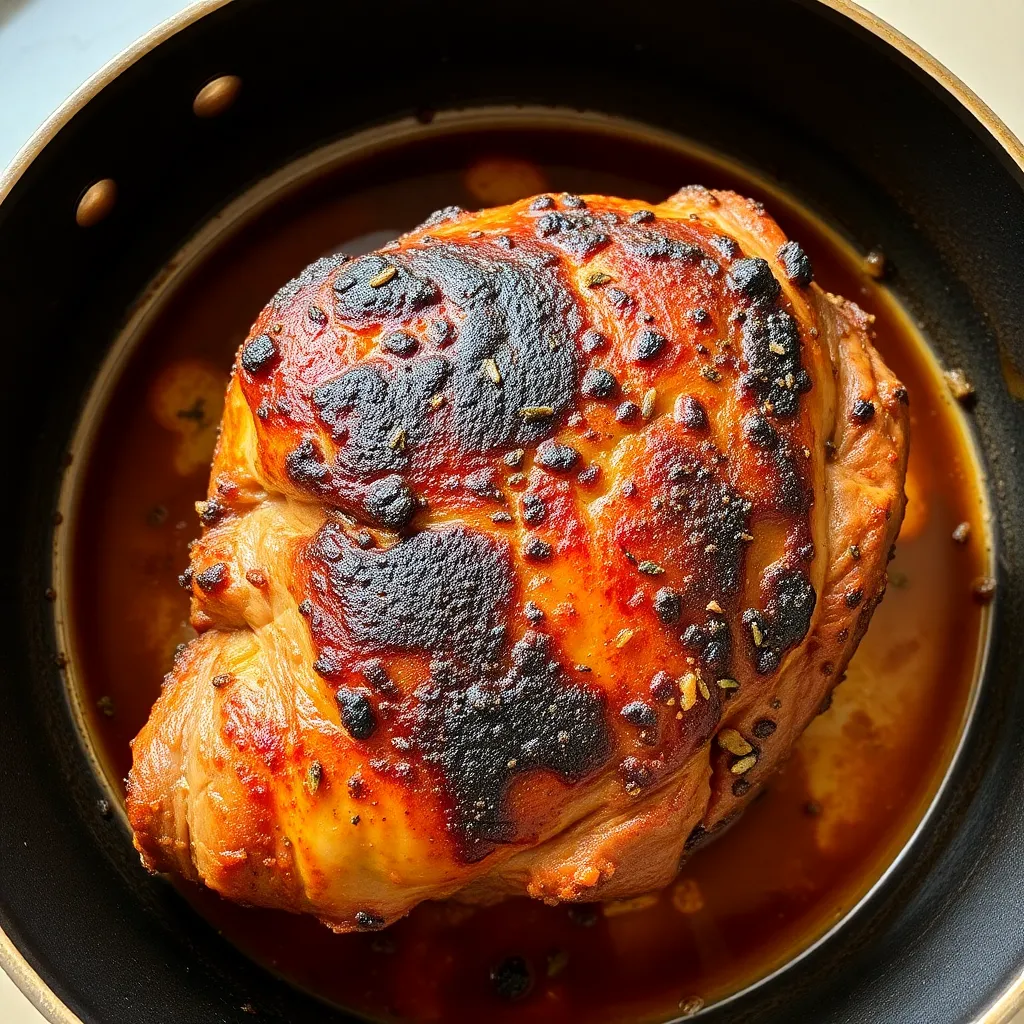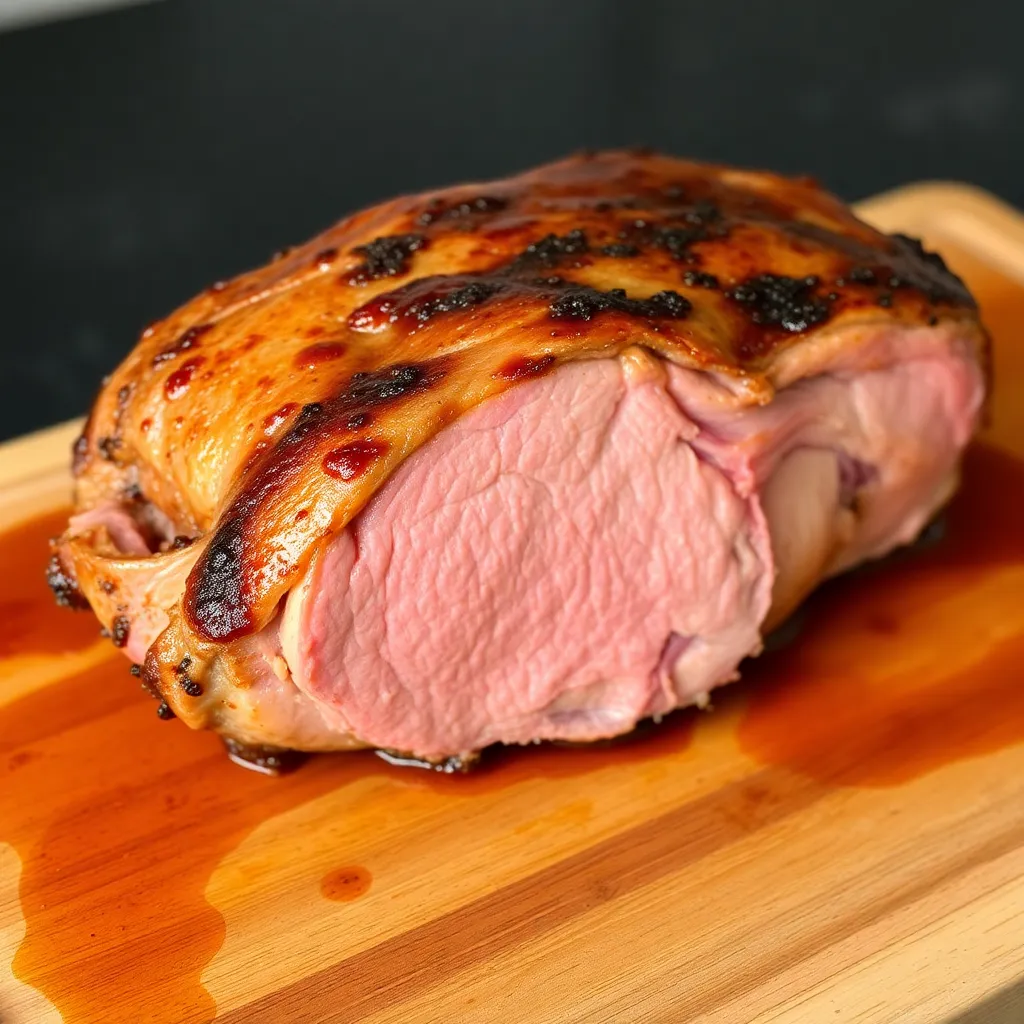Table of contents
Delicious and Affordable: Poor Man’s Prime Rib
Imagine savoring a succulent, tender roast that feels indulgent but is kind to your wallet. Poor Mans Prime Rib offers just that a delightful dining experience without the extravagant cost. This dish takes a more affordable cut of beef and transforms it into a mouthwatering centerpiece for any gathering. Through careful preparation, you can achieve a flavor and texture reminiscent of traditional prime rib.
What is Poor Man’s Prime Rib?
For those unfamiliar, Poor Man’s Prime Rib isn’t truly rib meat. Instead, it uses a chuck roast or another inexpensive cut to simulate the taste and presentation of prime rib. This method of cooking provides an excellent alternative for those seeking the luxury of prime rib without breaking the bank.
Benefits of Using Cheaper Cuts
- Cost-Effective: Save money while still enjoying a hearty meal.
- Versatile Cooking: Perfect for various cooking methods, including roasting and slow cooking.
- Flavorful: When cooked properly, these cuts are just as juicy and tender.
Preparing for Cooking Success
Before you start cooking, gather all your ingredients and tools to make the process go smoothly.
Ingredients You Will Need
- Chuck Roast: The star of the dish, around 3-4 pounds.
- Olive Oil: For searing and locking in the flavors.
- Garlic and Herbs: Use fresh garlic cloves, rosemary, and thyme for seasoning.
- Salt and Pepper: Essential for enhancing the beef’s natural taste.
- Beef Broth: Adds moisture and depth to the dish.
Essential Tools
- Roasting Pan: To accommodate the size of the roast.
- Meat Thermometer: Ensures perfect doneness.
- Aluminum Foil: Keeps the meat warm and juicy after cooking.
Step-by-Step Cooking Instructions
Bringing Poor Man’s Prime Rib to life involves a few straightforward steps. Follow this detailed guide to achieve a delicious result.
Step 1: Seasoning the Roast
Generously coat the chuck roast with olive oil. This helps the seasonings adhere better. Next, rub minced garlic, salt, pepper, and chopped herbs all over the meat. Make sure to cover every side for an even flavor.
Step 2: Searing for Flavor
Heat a large skillet over medium-high heat. Once hot, sear the roast on all sides until it develops a beautiful brown crust. This step is crucial—it locks in juices and builds a rich, savory flavor.
Step 3: Roasting to Perfection
Preheat the oven to 275°F (135°C). Place the seared roast in a roasting pan and pour beef broth around it. Cover tightly with aluminum foil. Roast in the oven until the internal temperature reaches 135°F (57°C) for medium-rare, typically 2.5 to 3 hours.

Searing the roast locks in the flavors and juices for a succulent meal.
Step 4: Resting the Meat
After removing from the oven, let the roast rest for at least 20 minutes. This allows the juices to redistribute, ensuring every slice is moist and tender.
Serving Suggestions
Once rested, slice the Poor Man’s Prime Rib against the grain for melt-in-your-mouth tenderness. Pair it with your favorite sides such as mashed potatoes or a fresh salad to complement the rich flavors of the beef.
By following these steps, you can enjoy a gourmet-style meal at home without the hefty price tag. Engaging your senses with delightful aromas and flavors, this dish is sure to become a favorite at your dining table.
Perfecting the Poor Man’s Prime Rib
Achieving the Ideal Temperature
Cooking your Poor Man’s Prime Rib to the perfect temperature is crucial for a juicy, flavorful meal. Preheat your oven to 250°F (121°C). This ensures even cooking, allowing the flavors to meld beautifully. Place a meat thermometer into the thickest part of the roast, aiming for an internal temperature of 135°F (57°C) for medium-rare.
Remember that the meat will continue to cook slightly after it’s removed from the oven, known as carryover cooking. This step is vital to prevent overcooking.
As you monitor the temperature, keep in mind that reaching precision takes patience. Avoid opening the oven frequently, as this can lead to uneven cooking. Instead, rely on your thermometer for accurate readings.
Resting the Roast
Resting is a step that should not be skipped. After removing your Poor Man’s Prime Rib from the oven, let it rest for at least 20 minutes. This allows the juices to redistribute, ensuring each slice is tender and moist. Cover the roast loosely with aluminum foil to keep it warm without trapping steam, which could make the crust soggy.
During this time, gather any remaining drippings from the roasting pan to enhance your gravy. These rich drippings add depth to your sauce, making your meal memorable.

Ensure the meat rests to retain its juiciness and enhance flavor.
Carving with Care
When carving your Poor Man’s Prime Rib, use a sharp knife to maintain clean slices. Begin by cutting against the grain, which shortens the muscle fibers and results in tender bites. Consider slicing at an angle to create a more visually appealing presentation. As you carve, encourage uniform slices to ensure consistent cooking and flavor with each piece.
Do not rush this step. Taking your time ensures the meat remains intact, with minimal juice loss. If you are serving a large group, pre-slice the roast to streamline serving, while ensuring the presentation is impeccable.
Perfect Pairings
Pair your Poor Man’s Prime Rib with complementary side dishes to elevate the meal. Classic options like creamy mashed potatoes or roasted vegetables enhance the flavors of the roast. A tangy horseradish sauce or a rich au jus can provide the perfect finishing touch, adding both moisture and zest.
Consider the balance of textures and flavors. A crunchy green salad or toasted bread can add contrast, making each bite more exciting. Planning your sides thoughtfully creates a cohesive dining experience, delighting your guests.
Final Thought
The journey to the perfect Poor Man’s Prime Rib takes attention to detail and care, but the reward is a meal that is as satisfying as it is budget-friendly. By focusing on temperature, resting time, careful carving, and pairing with complementary sides, you can create a dish that feels luxurious and tastes incredible. Enjoy the process and relish in the flavors of a job well done.
FAQs
What is Poor Mans Prime Rib?
Poor Mans Prime Rib is a cost-effective alternative to traditional prime rib, utilizing more affordable cuts of beef like chuck roast or sirloin tip roast. It offers a comparable taste and texture, providing a luxurious meal without the hefty price tag.
How do you ensure Poor Mans Prime Rib is tender?
The key to tender Poor Mans Prime Rib lies in slow roasting at a low temperature and allowing the meat to rest after cooking. This helps break down the fibers and ensures juiciness.
Can I prepare Poor Mans Prime Rib in advance?
Yes, you can prepare it in advance. Marinate the meat in your choice of spices and herbs overnight to enhance flavor. Follow through with the slow roasting process the next day for best results.
Are there vegetarian alternatives to Poor Mans Prime Rib?
For vegetarians seeking a similar experience, you might try a hearty portobello mushroom roast or a cauliflower steak, seasoned and cooked with the same care and intention.
What side dishes complement Poor Mans Prime Rib?
Traditional sides such as roasted vegetables, mashed potatoes, or a fresh green salad work wonderfully with Poor Mans Prime Rib. These sides enhance and complement the rich flavors of the meat.
Practical Tips
- Temperature Control: Invest in a good meat thermometer to monitor the roasting process and achieve your desired level of doneness.
- Resting Time: Allow your Poor Mans Prime Rib to rest for at least 15-20 minutes after cooking. This ensures the juices redistribute evenly, resulting in a more succulent dish.
- Flavor Boost: Marinate your roast with garlic, rosemary, and thyme overnight. This step infuses the meat with deeper flavors.
- Slicing Technique: Always slice against the grain. This technique helps make each bite tender and palatable.
Conclusion
Exploring the world of Poor Man’s Prime Rib allows you to enjoy the indulgent, rich flavors of a gourmet meal without straining your budget. This dish is a testament to creativity in the kitchen, proving that luxurious dining can be both accessible and affordable. Whether it’s a family dinner or a special celebration, Poor Man’s Prime Rib shines as a centerpiece that combines elegance with practicality.
To enhance your cooking journey, embrace the joy of experimentation and personalization. Adjust seasonings, explore sides, and perfect the art of slow cooking to bring out the best in every bite. Pair this dish with other versatile recipes like a refreshing Strawberry Juice for a vibrant drink or utilize leftovers creatively with ideas from Leftover Rotisserie Chicken Recipes. For a hearty complement, consider serving it alongside an Italian Meatloaf to round out the meal.
Cooking is as much about the process as the result. By taking time to slow cook and season with care, you transform a humble cut of meat into a showstopping dish. With each step, you’ll discover the satisfaction that comes from creating a meal that’s both economical and impressive.
So, gather your ingredients, savor the process, and enjoy the rewards of your efforts. Poor Man’s Prime Rib isn’t just a dish; it’s a celebration of ingenuity and the joy of making something extraordinary from the ordinary.
For further guidance and inspiration, explore these resources that provide detailed recipes and additional insights:
- Beeyond Cereal: Poor Mans Prime Rib
- Flavorite: Poor Mans Prime Rib Recipe
- Cooking Professionally: Poor Mans Prime Rib
- Facebook: Recipes by Emily
- Pattie Tierney: Poor Mans Prime Rib
By approaching Poor Mans Prime Rib with curiosity and creativity, you’re not just preparing a meal; you’re crafting an experience that delights and impresses.